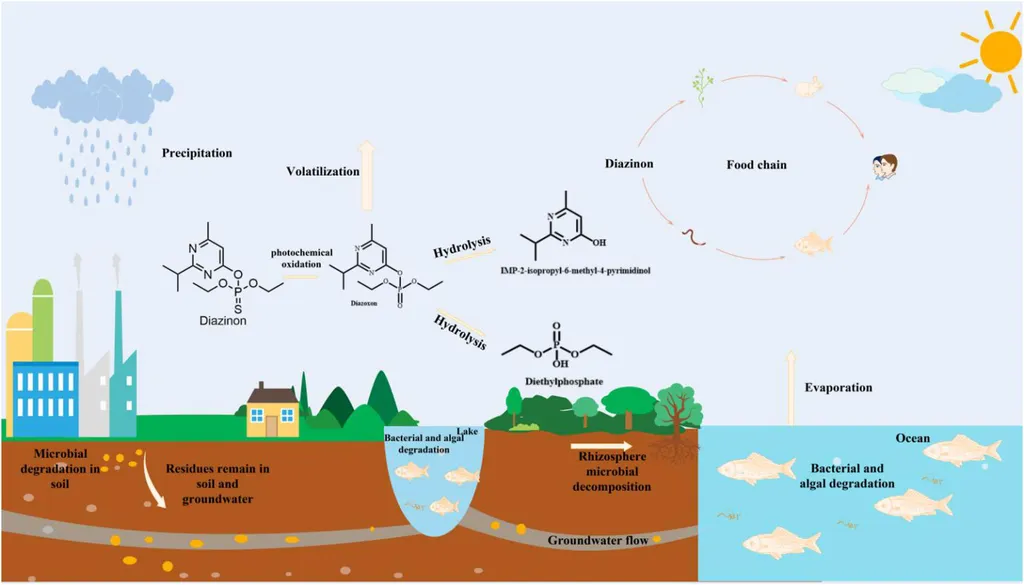In the heart of Iran, a groundbreaking study is unfolding that could revolutionize how we tackle one of agriculture’s most persistent pollutants. Hadieh Mikaeilzadeh, a PhD student in Chemical Engineering at the University of Guilan, is leading the charge in developing a sustainable solution for diazinon contamination in wastewater. Her research, published in the journal ‘آب و فاضلاب’ (translated to English as ‘Water and Wastewater’), is not just a scientific endeavor but a beacon of hope for cleaner water resources and a healthier environment.
Diazinon, an organophosphate insecticide, has long been a double-edged sword in agriculture. While it’s effective in pest control, its persistence and toxicity in aquatic environments pose significant risks. “The challenge lies in its biodegradation,” Mikaeilzadeh explains. “Diazinon’s complex molecular structure makes it resistant to conventional treatment methods, necessitating innovative approaches.”
Enter aerobic granules and sequencing batch reactors (SBRs). Mikaeilzadeh’s study evaluated the potential of aerobic granule formation from diazinon-adapted activated sludge in an SBR. The process is akin to training microorganisms to break down diazinon efficiently. “We started with activated sludge and gradually adapted it to diazinon,” Mikaeilzadeh says. “Over 14 weeks, we replaced glucose with diazinon until it became the sole carbon source.”
The results were promising. After 60 days of operation, the removal efficiency of diazinon soared from 72.33% to 94.33%. The aerobic granules formed were robust, with a protein-to-polysaccharide ratio indicating good structural cohesion. “The granules’ size and stability were remarkable,” Mikaeilzadeh notes. “They reached up to 3 mm in diameter, showcasing their potential for large-scale application.”
The implications for the energy and agriculture sectors are profound. Efficient diazinon removal can lead to cleaner water resources, reducing the environmental impact of agricultural runoff. This, in turn, can mitigate the energy costs associated with water treatment and improve the sustainability of agricultural practices.
Mikaeilzadeh’s research is a testament to the power of innovative thinking in addressing environmental challenges. As she puts it, “Our findings open doors to scalable, sustainable solutions for diazinon-contaminated wastewater treatment.” The study not only advances our understanding of biodegradation but also paves the way for future developments in wastewater treatment technologies.
In an era where environmental sustainability is paramount, Mikaeilzadeh’s work stands out as a beacon of hope. Her research, published in ‘آب و فاضلاب’, is a significant step towards cleaner water and a healthier planet. As the world grapples with the challenges of pollution and climate change, such innovative solutions are more crucial than ever. The future of wastewater treatment is here, and it’s granular, efficient, and sustainable.

